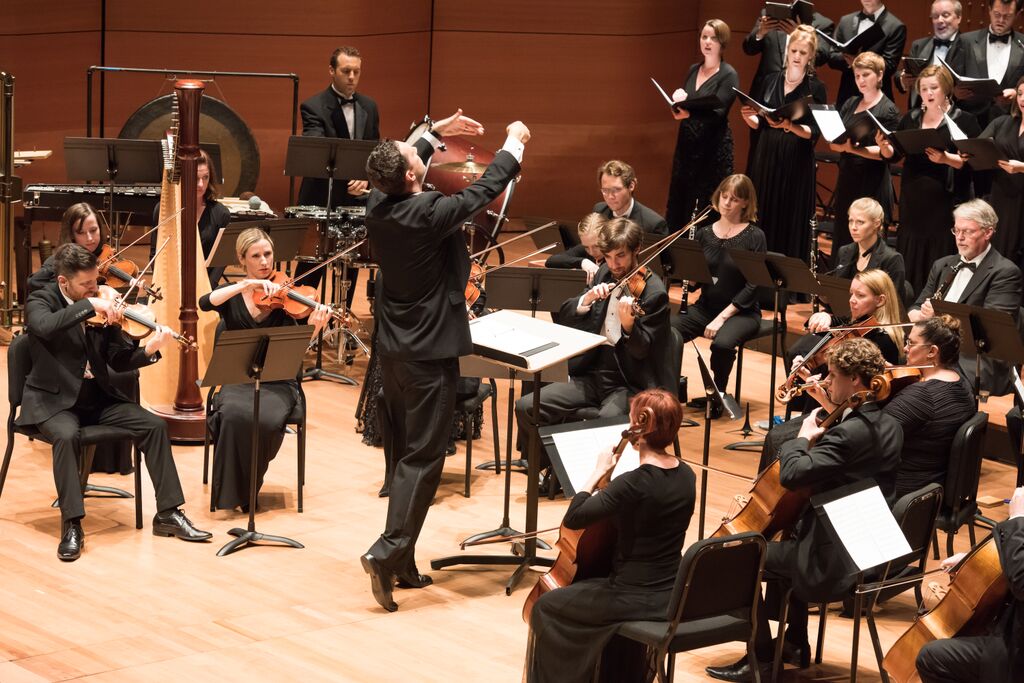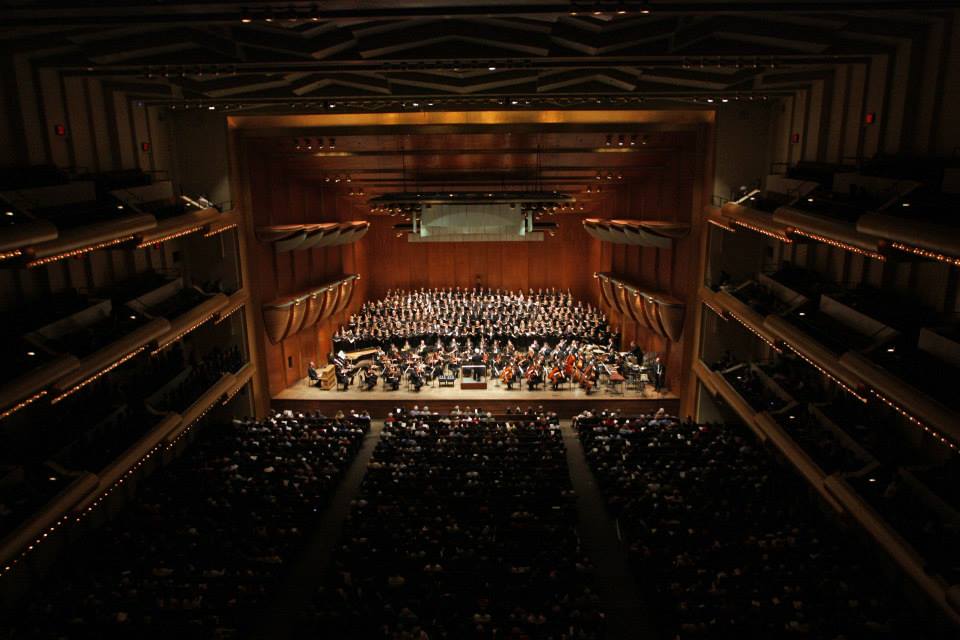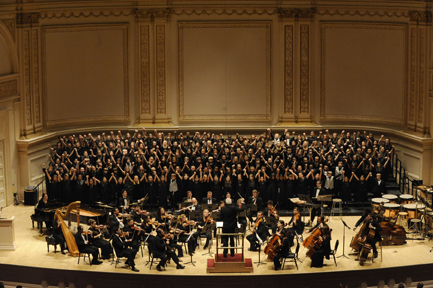Distinguished Concerts International New York (DCINY) presents True Concord Voices and Orchestra
True Concord Voices and Orchestra; Eric Holtan, music director and conductor
Alice Tully Hall at Lincoln Center, New York, NY
September 11, 2015
September 11, 2001 is a day that will be forever etched in the minds of those who were witness to its horrors. On the 14th anniversary of 9/11, Distinguished Concerts International New York (DCINY) presented a concert in remembrance, featuring the True Concord Voices and Orchestra. The program consisted of two works, Mozart’s Requiem, K. 626, and the New York Premiere of Prayers and Remembrances by American composer Stephen Paulus (1949-2014).
True Concord Voices and Orchestra hail from Tucson, Arizona. Founded in 2004, their original name was the Tucson Chamber Artists. On their name change in 2015, music director Eric Holtan explained that, “The original 14th century meaning of concord is ‘hearts together.’ Shakespeare later described the emotional impact of music as ‘true concord’- something we strive to achieve among composers, performers, and listeners.”
Mr. Holtan took to the stage to lead the ensemble in Mozart’s Requiem. The story behind the creation of this masterpiece is so well known that the program had no notes at all, save for a “completed by Süssmayr” designation. I leave it for the reader to do his own investigations if he wishes to learn more. Mr. Holtan led a skillful, highly polished performance. It was at once obvious that these musicians brought considerable talents to this work, and had refined their interpretation from continued performances. The relatively small forces of this ensemble lent a sense of intimacy and immediacy, in contrast with the bombast of some performances by larger forces. It was a sound on a scale that I was unaccustomed to hearing, but one I found to be compelling in its nuance. Special mention must be made of the Tuba Mirum’s excellent trombone soloist, who played with amazing clarity and tone, and to the vocal soloists, soprano Megan Chartrand, mezzo-soprano Margaret Lias, tenor Charles Blandy, and bass Paul Max Tipton, for their excellent work. What was especially gratifying was that each soloist was a member of the chorus, and not a “special guest” recruited for the performance. When it was all over, the large audience shouted their approval in a way one does not expect for this work – a clear indication that the many friends and supporters of the True Concord Voices and Orchestra were in attendance to support them. It was a well-earned and justifiable reaction.
After intermission, Mr. Holtan returned to the stage. He shared with the audience the story behind the commissioning of Prayers and Remembrances, and how closely Stephen Paulus worked with the ensemble in the recording of this work in 2013. Tragically, Mr. Paulus suffered a massive stroke six weeks after the recording and never recovered (Mr. Paulus passed away on October 19, 2014). The loss to music was immeasurable, but we can be grateful for the hundreds of works Mr. Paulus created.
Prayers and Remembrances is a seven-movement work, each movement using carefully selected poems, both secular and non-secular, that all touched on the concept of grief, but also recovery and spirituality in living. Quoting Mr. Paulus, “My concern was to write a work that would not only honor the 9/11 tragedy and all those who perished, but also one that would address the memories, the grieving and the recovery for anyone dealing with a circumstance in which loved ones had perished.” The scoring is similar to that of the Mozart, with the addition of flute, oboe, horns, harp, and percussion (with the clear idea of being paired in performance with the Mozart). The music is tonal, with harmonic language that is familiar sounding, yet somehow distinct without resorting to cheap effects. The melodies are often poignant and moving, but never lapsing into mawkish sentimentality. The addition of the extra percussion added a layer of dramatic tension that deepened the already compelling musical effect.
Mr. Holtan led with total commitment, his gestures seemingly coaxing the utmost from his ensemble in a performance that held this listener’s complete attention for the work’s entire thirty-five plus minutes. I would love to talk extensively about all seven movements, but I will just mention the fifth movement, In Beauty It Walks, with text from Traditional Navaho Prayer, as my favorite. The simple but moving text is set with consummate skill, and the orchestral writing has a radiance that shines upon the vocal with powerful effect. It is a shame that Mr. Paulus was not with us this night, as I am sure he would have been pleased with the results. Prayers and Remembrances is an outstanding work, and it should be a centerpiece at any 9/11 memorial concert, or any concert for that matter. As with the Mozart, featured vocal soloists were also members of the chorus, a different set of four this time. Congratulations go to soprano Margot Rood, alto Emily Marvosh, tenor Patrick Muehleise, and bass David Farwig, for matching the high standards of their colleagues from the first half. The very quiet ending was something the audience was not expecting, but once the last sounds faded away, they reacted with an increasing amount of applause, as if each second made them realize what a unique work they had just heard.
For those who were not in attendance, but are interested in hearing Prayers and Remembrance, the recording that Mr. Holtan spoke about has been released. Called Far in the Heavens – Choral Music of Stephen Paulus, (Reference Recordings FR-716– click on the link for more information), it also features other works by Mr. Paulus that are equally worthy of attention.
Congratulations to the True Concord Voices and Orchestra for living up to the ideals of their name and for the wonderful performance.






